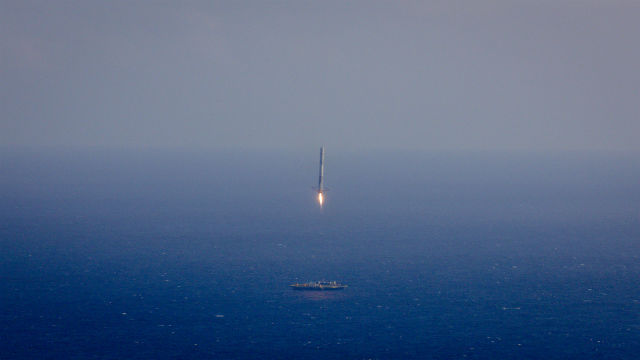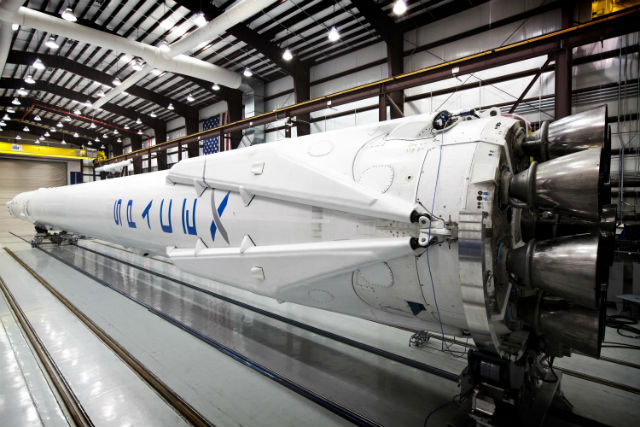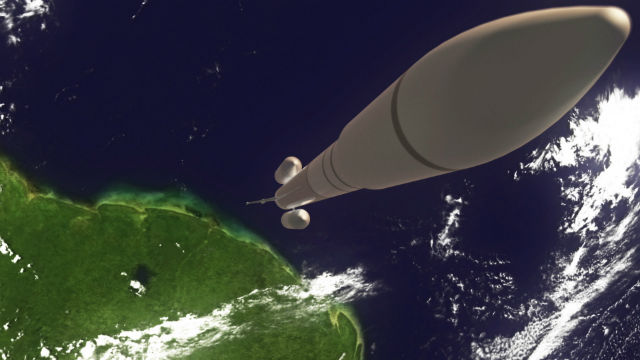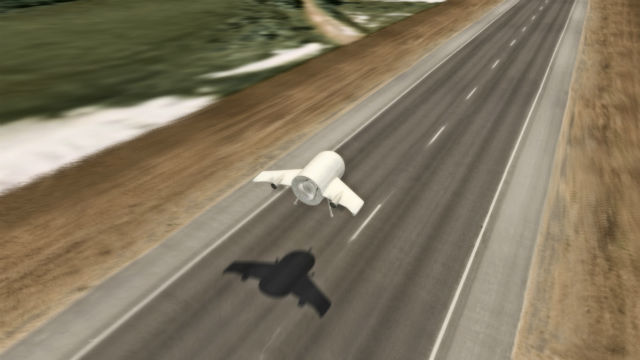Imagine boarding your flight, flying to your destination and watching from the arrivals lounge as what was a brand-new aircraft is towed away and pushed into the sea. For the return journey, you board another brand-new aircraft; it, too, is dumped after landing. Now, imagine how much your ticket costs.
Space travel is like that. A rocket flight to orbit costs many tens of millions of dollars – often more than the cost of designing and building the payload – and the time between booking a ride and lift-off can be measured in years, so space has always been big budget territory. Governments dominate, paying for national priority projects like weather, mapping, navigation and spy satellites. Scientific missions compete fiercely for the public money needed to get them to space, typically as secondary or “piggy-back” payloads that leave them at the scheduling mercy of principal customers. Telecommunications satellites are about the only commercial propositions that pay their own way.
Modern electronics is cutting the size and cost of most payloads, so bundling several on one rocket is increasingly feasible. Even when shared, though, the cost of the actual launch remains a huge bar to access to space. But could rockets be reused, like aircraft?
Elon Musk, the Silicon Valley billionaire who got rich creating PayPal and then exploited his fortune to start the Tesla electric car company and rockets business SpaceX, thinks they can. His two biggest rivals seem to agree, and 60 years into the space age, there are now three very different concepts in development that might bring about what Musk calls “the fundamental breakthrough needed to revolutionise access to space”.
SpaceX is already testing its reusable concept. The first stage of Musk’s Falcon 9 launcher was designed from the start for reusability, by bringing the fuel tank and cluster of nine Merlin engines back to Earth by a powered vertical landing on deployable legs. For a 14-storey-tall structure, surviving re-entry means engine burns to slow down and to point end-on at the atmosphere; further fuel – which on any disposable rocket would have all been used to reach orbit – is needed to slow and guide the stage to landing.
Three attempts this year to set down on a drone barge in the Atlantic after flights from Cape Canaveral have failed: a hard landing on the barge, a soft – and vertical – landing nearby in the sea, and a soft but not vertical landing on the barge (“excess lateral velocity caused it to tip over”). Another try is scheduled and Musk’s broad theme has been that success is a matter of getting the details right; before the first attempt he said: “Given what we know today, we believe it is quite likely that with one of those flights we will not only be able to land a Falcon 9 first stage, but also re-fly.”

Close, but no cigar
SpaceX

Falcon 9; note the hinged landing legs
SpaceX
Meanwhile, United Launch Alliance – the Boeing-Lockheed Martin joint venture – in April this year unveiled its next-generation launch system, named Vulcan. Vulcan, to fly from 2019 and eventually replace the Atlas Vs and Delta IVs that ULA operates for the US Air Force, NASA and other clients, is a modular system designed to slash costs and handle missions ranging from simple satellite orbiting to support of deep-space operations such as asteroid mining. Or – perhaps to have a gentle dig at Musk and his oft-stated ambition of exploiting the economies of reusable rockets for colonising Mars – to populate “multiple planets”.
ULA will throw away the main stage tanks and focus on the “inherently reusable” main stage engines – 25% of the rocket’s mass but 65% of its value. The idea is to separate them from the big tank after the main burn, deploy an inflatable heat shield to survive hypersonic re-entry, deploy parachutes once back in the atmosphere and then come gently to land after mid-air capture by helicopter – a dramatic but well-proven operation.
And, earlier this month, Airbus Defence & Space outlined its own, two-pronged reusability concept that could feature as an evolution of the modular Ariane 6 launcher now in development for launch from 2020. Like ULA, Airbus – working through the new Airbus-Safran joint venture that is consolidating the Ariane 5 and 6 programmes – wants to save only the main stage engines.
Known as Adeline (ADvanced Expendable Launcher with INnovative engine Economy), the recovery concept exploits Europe’s love of convoluted acronyms, an apparent French belief that rockets should bear a woman’s name and a broad basket of Airbus Group aeronautics and space technical capabilities in autonomous and supersonic flight. Protected in a detachable, winged pod with turboprop propulsion and deployable landing gear, the main engines and avionics will, after separation, fly back to a runway – for example to Félix Eboué airport at Cayenne, near Europe’s Kourou, French Guiana launch facility.
Small prototypes have been flying at Airbus’s space facility at Les Mureaux, near Paris, since 2012 to prove that the shape is controllable, and a 200kg (441lb) version may be tested from 2016.

Ariane 6 launch with Adeline engine module; note the wings for return flight
Airbus Defence & Space

Adeline engine module returns
Airbus Defence & Space
The second prong of the concept is to park a restartable, liquid-fuel upper stage in low-Earth orbit. A main launch would deliver to this waiting “space tug” a payload and the fuel needed to carry it higher, including to a 36,000km (22,000 mile) geosynchronous orbit in the case of a telecoms satellite – hence reusing an upper stage without having to bring it back to Earth.
By leaving much of the rocket in orbit, the space tug idea would reduce the size – and cost – of launchers. Satellites would no longer need to carry their own fuel to reach final orbit, possibly reducing their cost and increasing their capability, and tugs could be used to upgrade, repair, resupply or reposition existing satellites. At the end of their useful lives, the tugs could also be used to carry a payload to deep space or be burned up safely in the atmosphere.
ULA is not strictly talking upper stage reusability, but its Vulcan rockets are being designed to support “distributed launch” missions. Here, multiple launches to low-Earth orbit would see payloads, fuel and even astronauts and their habitats and capsules joined up with propulsion units to enable heavy payload missions with high energy requirements.
Speaking in June 2015 at Les Mureaux, chief technology officer Hervé Gilibert says liquid fuel engines are by nature restartable, so reuse may not be such a huge leap. Indeed, he notes, Vulcain engines as used on Ariane rockets “are intrinsically capable of several uses”, with some having gone through 10 cycles of ground testing during development. Flight is another matter, but he sees no reason in principle why such an engine could not fly 10 or 20 times, “maybe more”.
Solid fuel motors, by contrast, are not candidates for reuse; all experience in the USA and Europe, says Gilibert, shows that they suffer significant damage on return from space, and nozzle erosion during firing, so refurbishment costs would swamp any savings.
Critically, Ariane 6 is being kept on track to fly from 2020; reusability is not being allowed to delay development. But its basic modular configuration will allow evolved variants to feature Adeline engine recovery – perhaps from the mid-2020s – and, eventually, space tug operations. Significantly, the original all-solid fuel main stage design for Ariane 6 as approved by ESA member states in November 2012 has been modified, to feature instead a main stage powered by liquid oxygen and hydrogen, based on Ariane 5’s Vulcain.
Ultimately, says Gilibert, the key to making it all work is to perfect the system; the necessary technology is available inside Airbus Group.
SO WHY NOT?
The case for reusability is at first glance compelling. In a high-impact presentation to the Royal Aeronautical Society in November 2012 that had a room full of engineers abuzz with excitement, Musk noted that the cost of a rocket today is only about 0.3% propellant, with the rest thrown away; in the case of a $60 million-plus Falcon 9 launch, that is less than $200,000 for gas and a lot of money ending up in the sea.
Musk also said that full reusability, and thus airline-style operating frequency, would be the difference between a Mars adventure costing “half a percent of GDP versus all of GDP”.
However, while showing that RAeS crowd some video of early – successful – attempts at vertical take-off vertical landing trials in West Texas, he also underscored the immense challenge, which goes far beyond merely controlling the thrust of a rocket stage to bring it safely back to a vertical landing. Today, said Musk, just 2-3% of a rocket’s mass reaches orbit, and to add the mass needed to make the craft reusable – in structural robustness and in hardware such as landing gear – will mean adding another 2-3%, employing every weight-saving “trick in the book” to achieve a “rocket that’s so mass-efficient that it gets 4-5% to orbit”.
Doubling launcher efficiency is a tall order, and even Musk – the entrepreneur-scientist who inspired the Tony Stark character in Marvel’s Iron Man superhero movies – may be asking too much. According to Airbus’s Gilibert, a vertical take-off vertical landing Falcon 9 main stage recovery is understood to consume some 40t of fuel, cutting payload capability by a third to a half depending on the mission. An Adeline engine fly-back would consume only about 2t of fuel but, reckons Gilibert, by recovering a component that represents 70-80% of the launch vehicle’s value, could cut launch operating costs by 30%, especially if launcher size can be reduced by employing on-orbit space tugs.
A 30% saving sounds impressive, but it cannot be assumed that theoretical savings and real costs will align in practice. Speaking recently to Flightglobal in Singapore, Stéphane Israël, who heads European launch operator Arianespace, which conducts Ariane 5 operations, said: “The question of reusability is not a question of technology, as we all think it is possible to have a reusable launcher. It is a problem of the business case.”
Refurbishment is expensive, he says, and adds that customers may not be willing to mount a valuable satellite on a main stage that has already flown.
Israël’s caveats recall that most famous reusable space vehicle, NASA’s Space Shuttle. Iconic as it may have been, the Shuttle programme was a failure when measured against its objectives of slashing costs and providing the USA with airline-style access to space. Over 30 years with as many as four orbiters in service at any time, there were just 135 Shuttle missions – on average one every 12 weeks, or less than four flights per orbiter per year. According to NASA, the cost of a typical flight was $450 million. By contrast, ULA today launches once or twice a week and promises that Vulcan flights will start at $100 million – less than half its current price tag and competitive with SpaceX.
François Auque, head of space systems at Airbus, echoes Israël in recognising that the challenge is to make a business case out of what is feasible for his engineers, and adds that the question of “technical reuse versus economic reuse” is not solved yet. He believes, though, that the sort of cost savings promised by Adeline and the space tugs are achievable.
Auque adds that his engineers are still looking for further game-changing ideas, but even halving the cost of a launch would not be revolutionary: “If we could cut the cost by 10 times, we would!”
Additional reporting by Greg Waldron in Singapore
Source: FlightGlobal.com




















